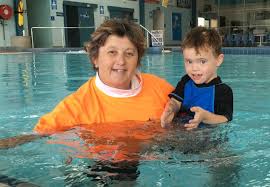
Having access to quality instructional materials is key for swim instructors aiming to deliver engaging, effective lessons. From lesson plans to visual aids, instructional materials help streamline teaching methods, ensure consistency, and support student progress. Here’s why using well-designed materials makes a difference in swim education.
1. Supports Structured Lesson Planning
Instructional materials often include ready-made lesson plans that guide instructors through each stage of swim education. By following structured plans, instructors can maintain a logical flow, ensuring that students progress in a clear, manageable way. This structure keeps lessons focused and consistent, allowing students to build on their skills step by step.
2. Provides Visual Learning Aids
Visual aids such as stroke diagrams, pool signage, and demonstration videos are invaluable for illustrating complex techniques. Many learners benefit from seeing movements broken down visually, making it easier to understand and replicate skills. For swim schools, investing in quality instructional materials enhances both teaching and learning experiences.
3. Enhances Safety Education
Safety is a critical aspect of any swim program, and instructional materials often include resources on essential water safety skills. These materials may cover basics like safe pool entry and exit, floating techniques, and emergency response practices, giving students foundational skills for safe aquatic experiences both in and out of the pool.
4. Allows for Customisation to Student Needs
Instructional resources can be tailored to different age groups, skill levels, and learning styles. This adaptability allows instructors to adjust lessons as needed, ensuring that all students—from beginners to advanced swimmers—receive instruction suited to their needs and abilities.
5. Facilitates Instructor Preparation and Confidence
Having pre-prepared materials allows instructors to focus on student engagement rather than planning on the go. Resources like skill progression checklists and class management tips equip instructors to deliver lessons confidently, knowing they have a well-thought-out structure in place.
6. Promotes Consistency Across Programs
Using standardised instructional materials ensures that swim programs maintain a consistent quality across different classes and instructors. This consistency benefits both students and instructors, as it ensures that all participants receive the same high standard of education regardless of who is teaching.
Conclusion
Access to comprehensive instructional materials is a key component of effective swim instruction, enhancing lesson structure, safety, and student engagement. With tools designed to support structured learning, instructors can provide quality instruction that builds students’ skills and confidence in the water.
